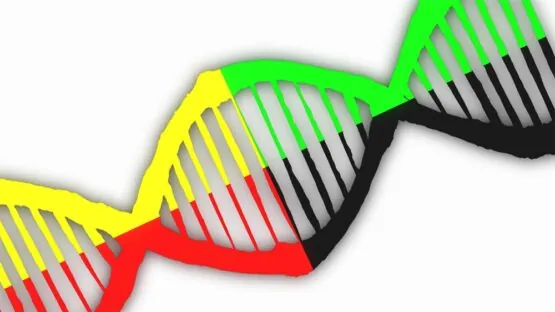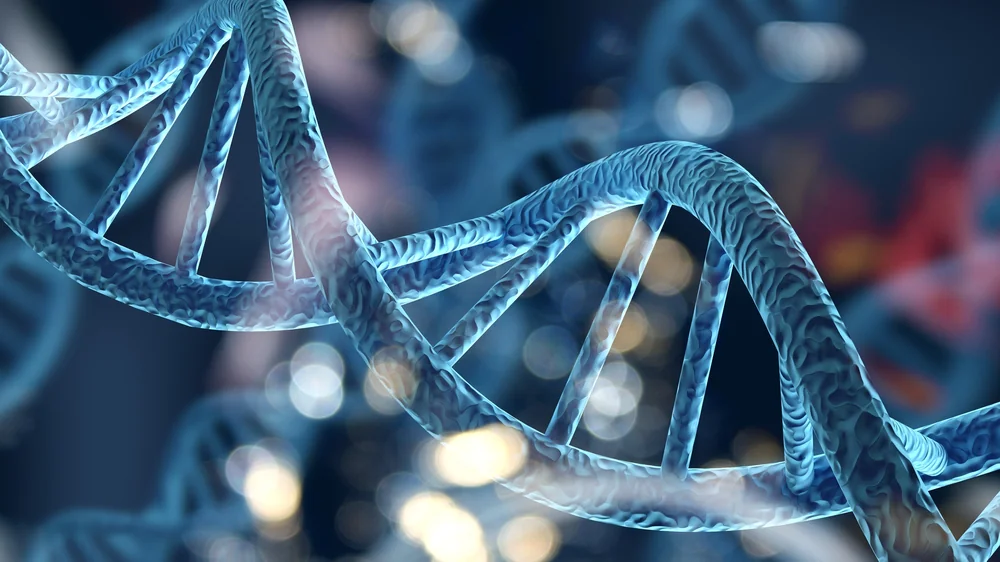According to a newly published paper in Nature Communications, transposable elements impact aging in C.elegans [1].
Transposable elements and aging
Transposable elements are often referred to as mobile genetic elements or jumping genes, as these DNA pieces can change their position in the genome. Changing the position of transposable elements can potentially lead to mutations in the functional DNA regions. Such activity is associated with genomic instability, a hallmark of aging [2].
A large fraction of the genome is composed of transposable elements, and it can be protected from their mutagenic activity by a silencing mechanism. However, this protective mechanism is not active in all cells.
This silencing mechanism is active in cells that can multiply indefinitely, which includes the germline cells, cancer stem cells, and the stem-like cells of certain species, such as the freshwater hydra. However, somatic cells that accumulate cellular damage and die are not protected by this mechanism [3].
There is growing evidence that transposable elements’ activity increases with age [4]. However, it is unknown how much of this activity increases due to aging and how much of aging is due to this increasing activity. Therefore, these researchers used a small, widely studied worm, C. elegans, to address this question.
Transposable elements and lifespan
To test the influence of transposable elements on C. elegans’ lifespan, researchers used a few approaches.
First, they silenced families of transposable elements called Tc1, Tc3, and Tc14 in C. elegans starting in young adulthood. Silencing those families of transposable families, but not others, led to animals that lived longer than controls. Similarly, increasing the expression of the Tc3 family shortened the worms’ lifespan.
Second, they quantified whether transposable elements are expressed throughout life or in a specific period. They found that Tc1, Tc3, and Tc14 expression were expressed at higher levels in older worms than younger worms. They also observed transposable elements becoming mobile (being removed from their original place in the genome) during aging.
Lastly, researchers bolstered the expression of genes that degrade the transcription of transposable elements. This was similar to silencing in its effect, reducing levels of Tc1, Tc3, and Tc14 while increasing C. elegans‘ lifespan.
The impact of methylation
DNA can be altered through changes such as adding chemical components. One such alteration is adding the methyl group to adenine, one of the four nucleotides involved in DNA coding. This modification occurs preferentially at the parts of the DNA where transposable elements are located [5].
There are contradictions regarding the role that methylation plays in transposable element activity. Research in fruit flies suggests that adenine methylation leads to the activation of transposable elements. Research in mammals suggests that this mechanism leads to silencing of transposable elements [5, 6].
The authors of this paper learned that adenine methylation increases as worms age and that there is a 5- to 6-fold increase in DNA regions with transposable elements in aged worms. Therefore, adenine methylation plays a role in transposable element activation during aging.
To investigate this further, the researchers used worms with inactive genes responsible for methylation and demethylation of adenine on transposable elements DNA sites. They observed that, in general, the absence of a gene responsible for demethylation leads to increases in the expression of transposable elements and a shorter lifespan.
When researchers inactivated Tc1 and Tc3 in the worms with inactive genes responsible for the demethylation of adenine, their lifespan increased compared to the worms with inactive genes responsible for the demethylation of adenine alone.
On the other hand, the inactivation of a gene responsible for methylation leads to decreased expression of transposable elements and extended lifespan. These results suggest that adenine methylation impacts lifespan by promoting transposable element expression in worms.
The authors also observed that adenine methylation was also impacted by heart stress. Based on this and previously published research, the authors concluded that stress pathways impact transposable elements’ activity, impacting lifespan.
Extending lifespan or creating tumors?
This research was done in C. elegans, a unique model organism that doesn’t develop tumors. However, research in different organisms, such as mice, suggests that repressing transposable elements may lead to cancer and death instead of lifespan extension [7].
Whether transposable elements are involved in lifespan extension, or lifespan shortening, in humans remains an unanswered question.
Literature
[1] Sturm, Á., Saskői, É., Hotzi, B., Tarnóci, A., Barna, J., Bodnár, F., Sharma, H., Kovács, T., Ari, E., Weinhardt, N., Kerepesi, C., Perczel, A., Ivics, Z., & Vellai, T. (2023). Downregulation of transposable elements extends lifespan in Caenorhabditis elegans. Nature communications, 14(1), 5278.
[2] Hedges, D. J., & Deininger, P. L. (2007). Inviting instability: Transposable elements, double-strand breaks, and the maintenance of genome integrity. Mutation research, 616(1-2), 46–59.
[3] Ross, R. J., Weiner, M. M., & Lin, H. (2014). PIWI proteins and PIWI-interacting RNAs in the soma. Nature, 505(7483), 353–359.
[4] Egilmez, N. K., & Shmookler Reis, R. J. (1994). Age-dependent somatic excision of transposable element Tc1 in Caenorhabditis elegans, Mutation research, 316(1), 17–24.
[5] Zhang, G., Huang, H., Liu, D., Cheng, Y., Liu, X., Zhang, W., Yin, R., Zhang, D., Zhang, P., Liu, J., Li, C., Liu, B., Luo, Y., Zhu, Y., Zhang, N., He, S., He, C., Wang, H., & Chen, D. (2015). N6-methyladenine DNA modification in Drosophila. Cell, 161(4), 893–906.
[6] Wu, T. P., Wang, T., Seetin, M. G., Lai, Y., Zhu, S., Lin, K., Liu, Y., Byrum, S. D., Mackintosh, S. G., Zhong, M., Tackett, A., Wang, G., Hon, L. S., Fang, G., Swenberg, J. A., & Xiao, A. Z. (2016). DNA methylation on N(6)-adenine in mammalian embryonic stem cells. Nature, 532(7599), 329–333.
[7] Siddiqi, S., Terry, M., & Matushansky, I. (2012). Hiwi mediated tumorigenesis is associated with DNA hypermethylation. PloS one, 7(3), e33711.





